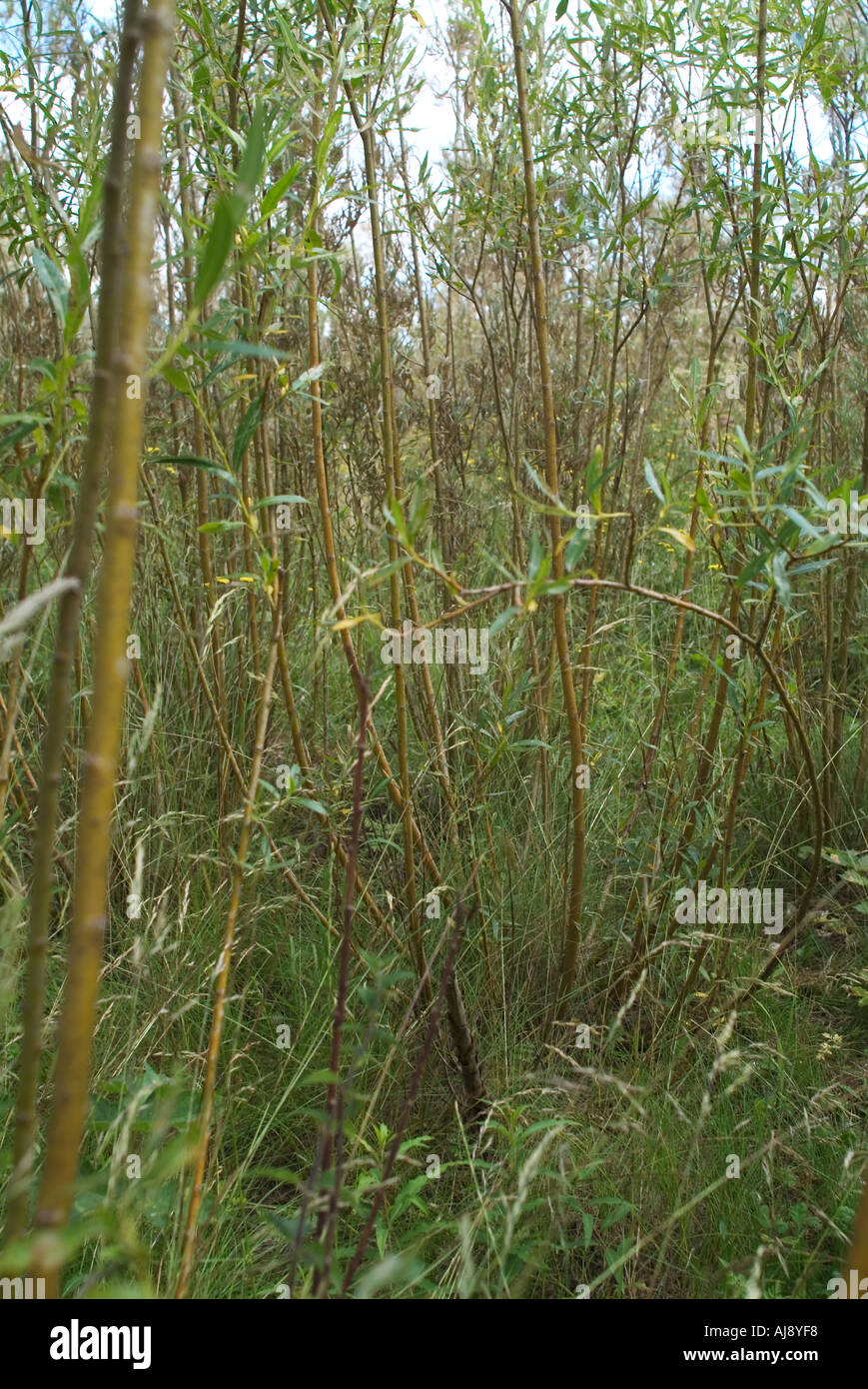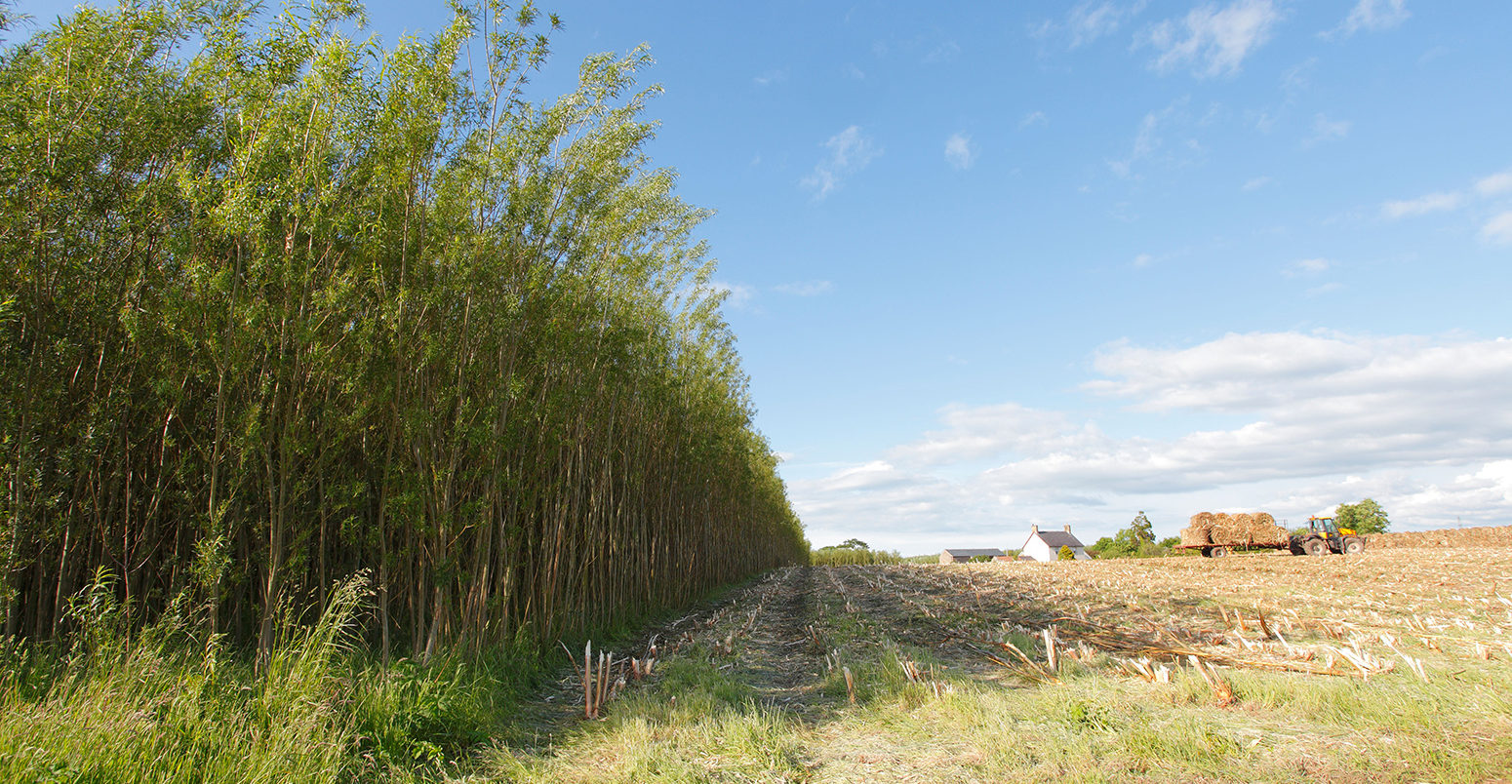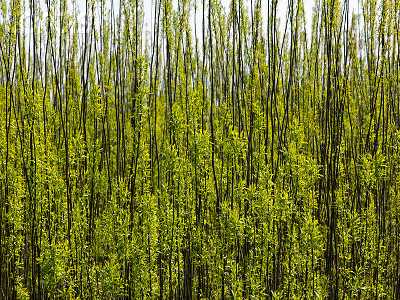

Planted in random without weed control cloth, the ground around the cuttings can be planted with woodland plants. Hazel will also grow in the same way and is particularly nice from making woodland coppices.

The first year around 3 rods will probably grow and it is best to cut the willow back to 10 cm above the ground the following February as this will encourage more rods to grow so you have a nice thick base with 10 to 20 shoots from it. (You can plant long rods horizontally under the soil, as willow will also sprou right along the length, but as it will not do this evenly cuttings are more accurate for a good looking coppice!) Then allow a 150 cm gap to walk down before planting the next two rows. If you are planting in rows it is best to push the cuttings in 60 cm apart with two rows 75 cm apart. Secondly, mixed variety coppices are healthier and more resistant to willow rust and willow beetle. Firstly it provides excellent winter colour variation and choice of colour for weaving. It also prevents quite a few nettle stings when you do come to harvest it! You should also plant them well away from drains (30 metres is good) as the fibrous roots travel! They will seek out and disrupt any underground drains as they like water.Īnother good tip is to plant several different varieties. This saves a lot of time weeding and prevents other plants growing up and causing the willow to twist or fork. One useful tip is to lay down weed control fabric over the site of your coppice and push your planting stools through it. At this time the plant is fairly dormant and will put all its energy into the new growth. The best time to coppice is February before the buds start to come out as the soft pussy willow buds appear in early March or late February in a warm year. However, if you are not using a huge amount you can just selectively cut from one grove. So if you have space you can grow 3 coppices in rotation, then you can cut willow every year. On a large scale you can crop your rods for baskets or fuel on a 2 to 5 year cycle – every 3 years being the most popular. Depending on the variety, willow will grow as much as 10 feet (3 metres) in a year. Willow rods grown in a coppice from stools, will grow tall and straight and have an intense colour in the winter – perfect for basketry. The rods will then grow in the same way as they do from stools but much higher up. Pollarding, is when you have a willow tree and cut back the branches to around a foot long from the main trunk. When it starts to grow it will put out rods all around the sides of the stool. The part of the cutting that protrudes above the ground is called a stool. These are fine to get a good root structure going although I prefer the longer sections myself and have soft enough soil to push it three quarters of the way in.

Cutting should be 18 to 30 cms long and 8 mm to 1 cm diameter. To plant a coppice all you need to do is to make cuttings from straight branches that you have cut before and push them into the ground in the early Spring around now. Even a small piece dropped onto the ground will be a sizeable shrub in a year’s time! Unlike some of the other trees where I feel quite guilty even trimming off the lower branches, willow grows like a weed. You don’t have to be gentle when cutting back willow. As a result they had grown spindly and weak (crowding out good trees like the Oak Quercus robur, Chestnut Castanea sativa and Maples Acer campestre) and the high winter winds in January were the final nail in the coffin, causing a lot of them to keel over completely. They were planted quite close to each other which is fine for coppicing but them not pruned back for some years. I have a large amount of willow, across several species, that I inherited in a rather poor condition.

Last weekend, mid February, I spent coppicing – cutting back my willow Salix spp.


 0 kommentar(er)
0 kommentar(er)
